



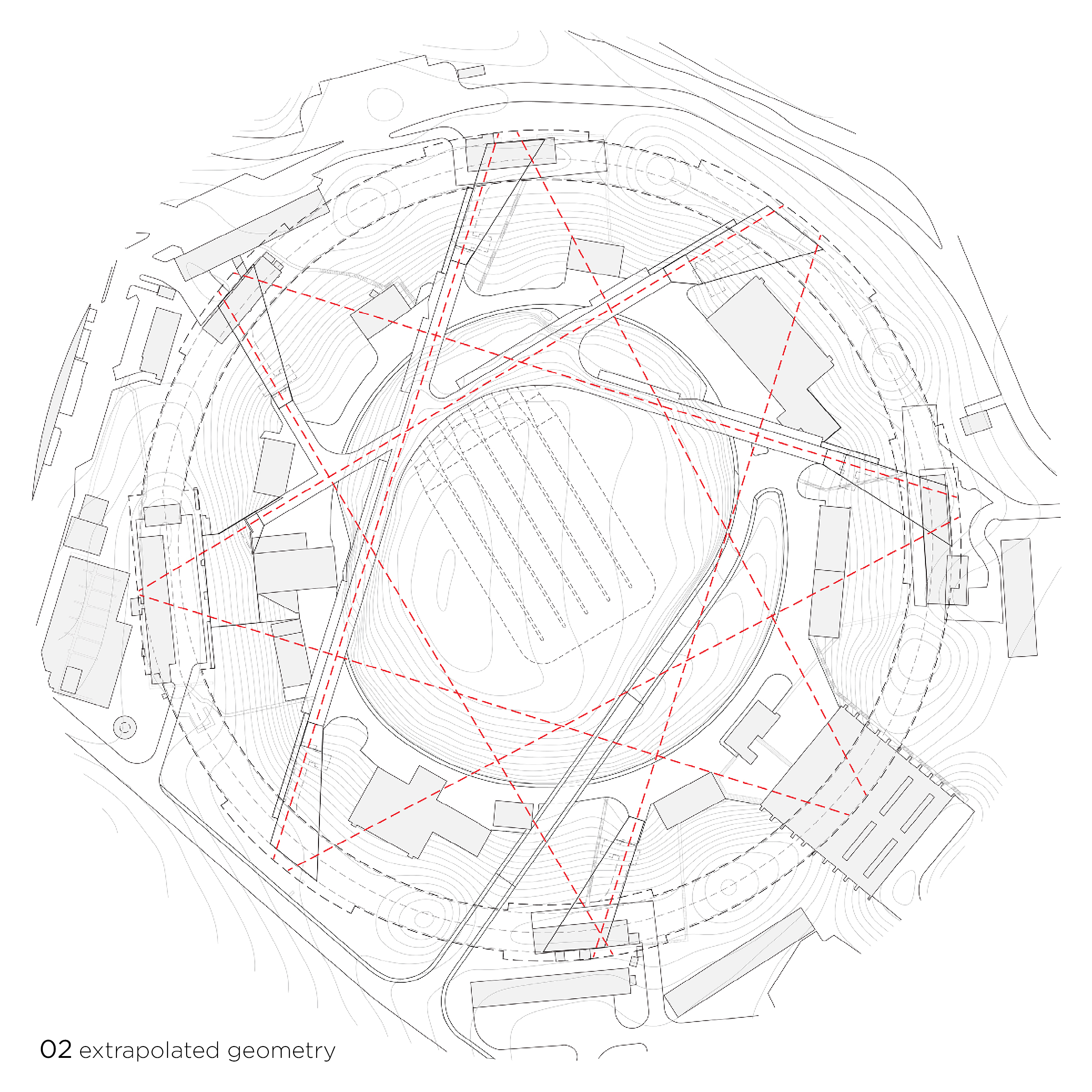

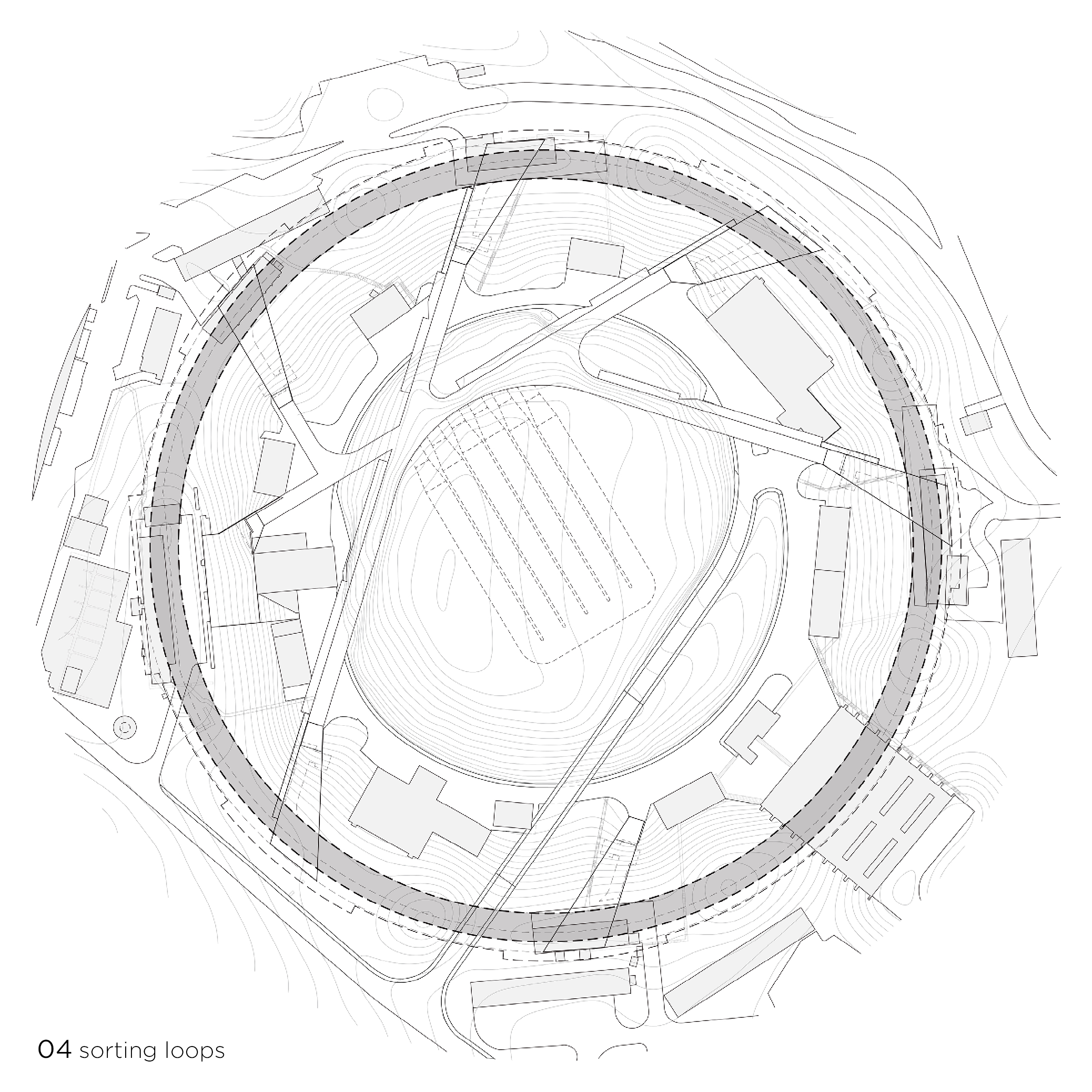

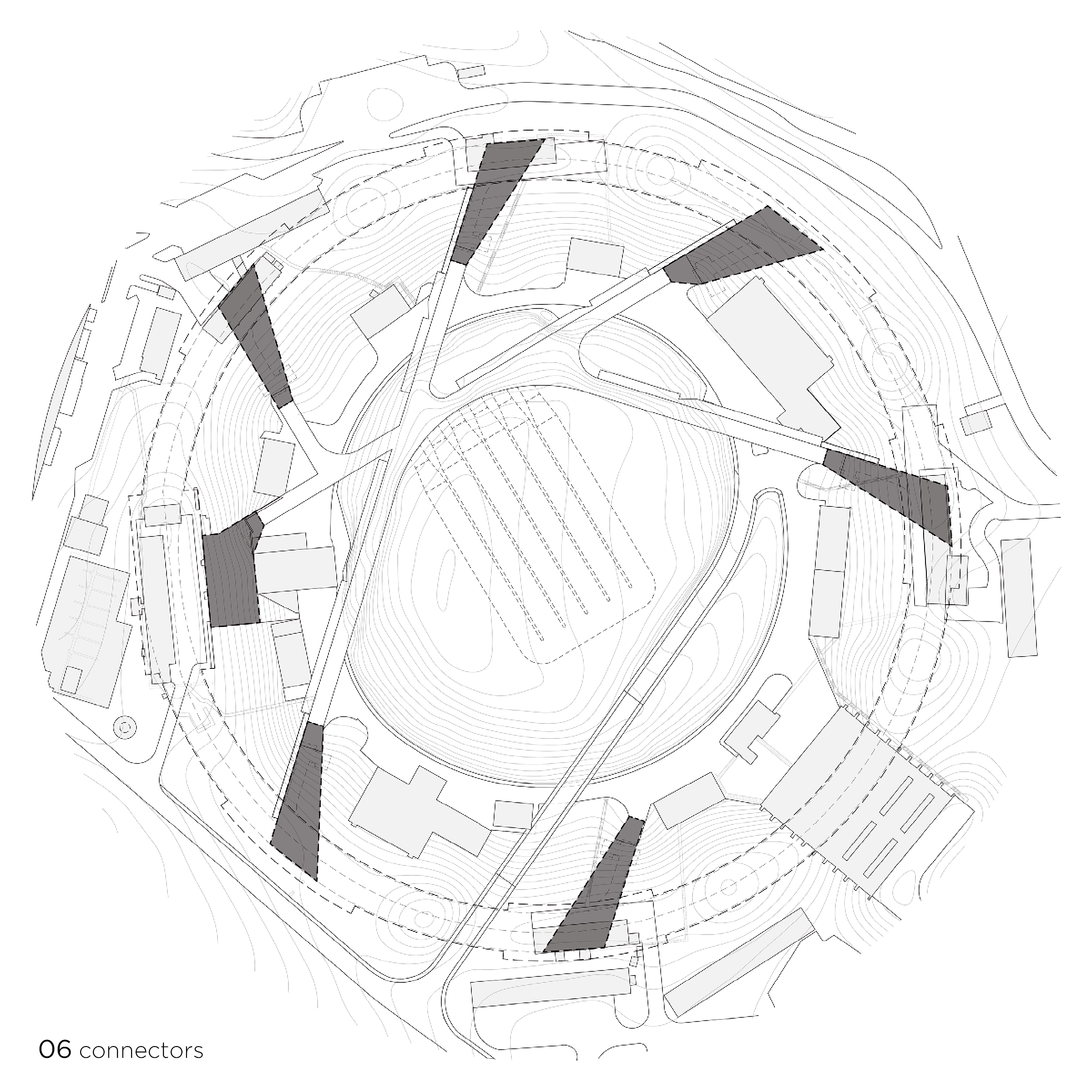
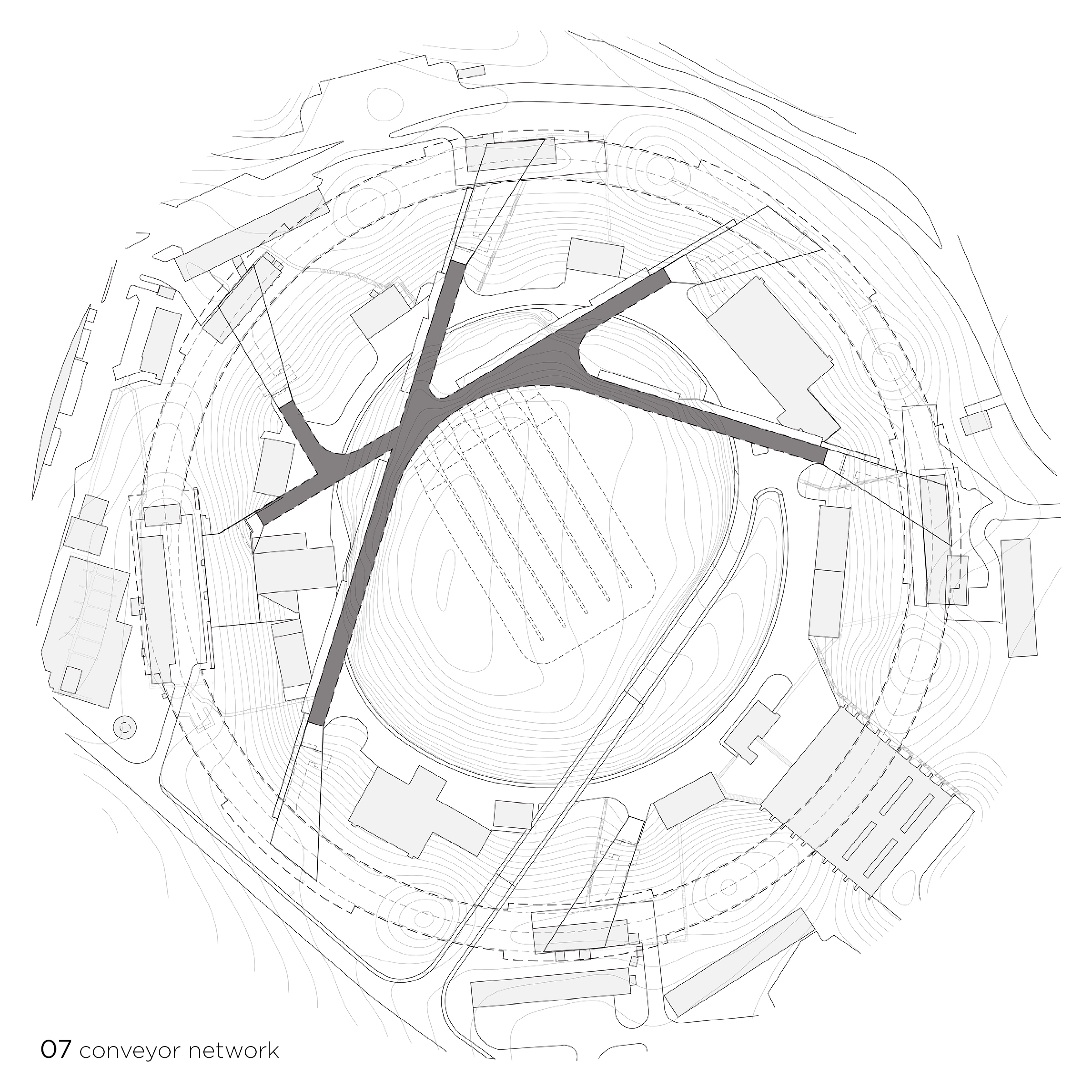
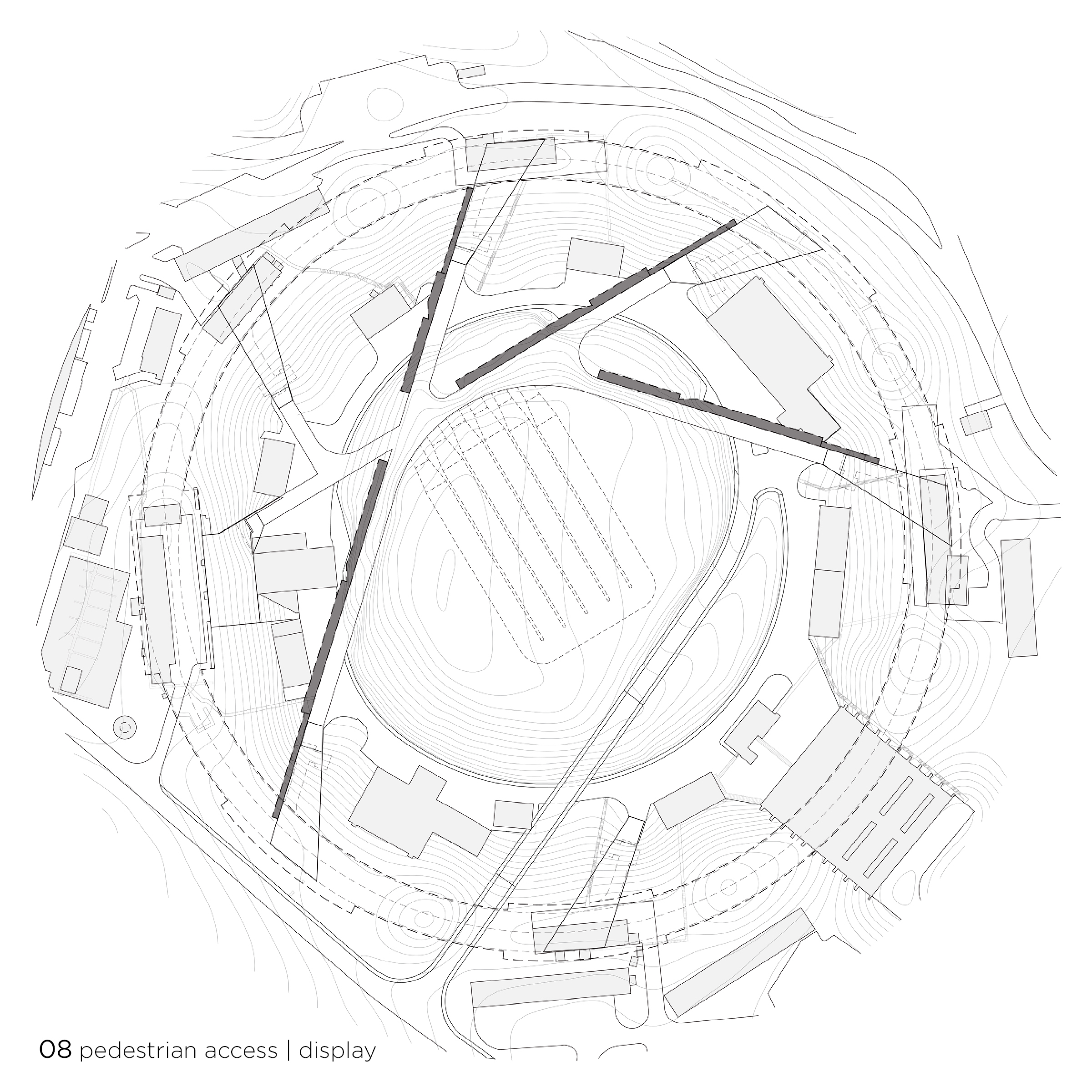
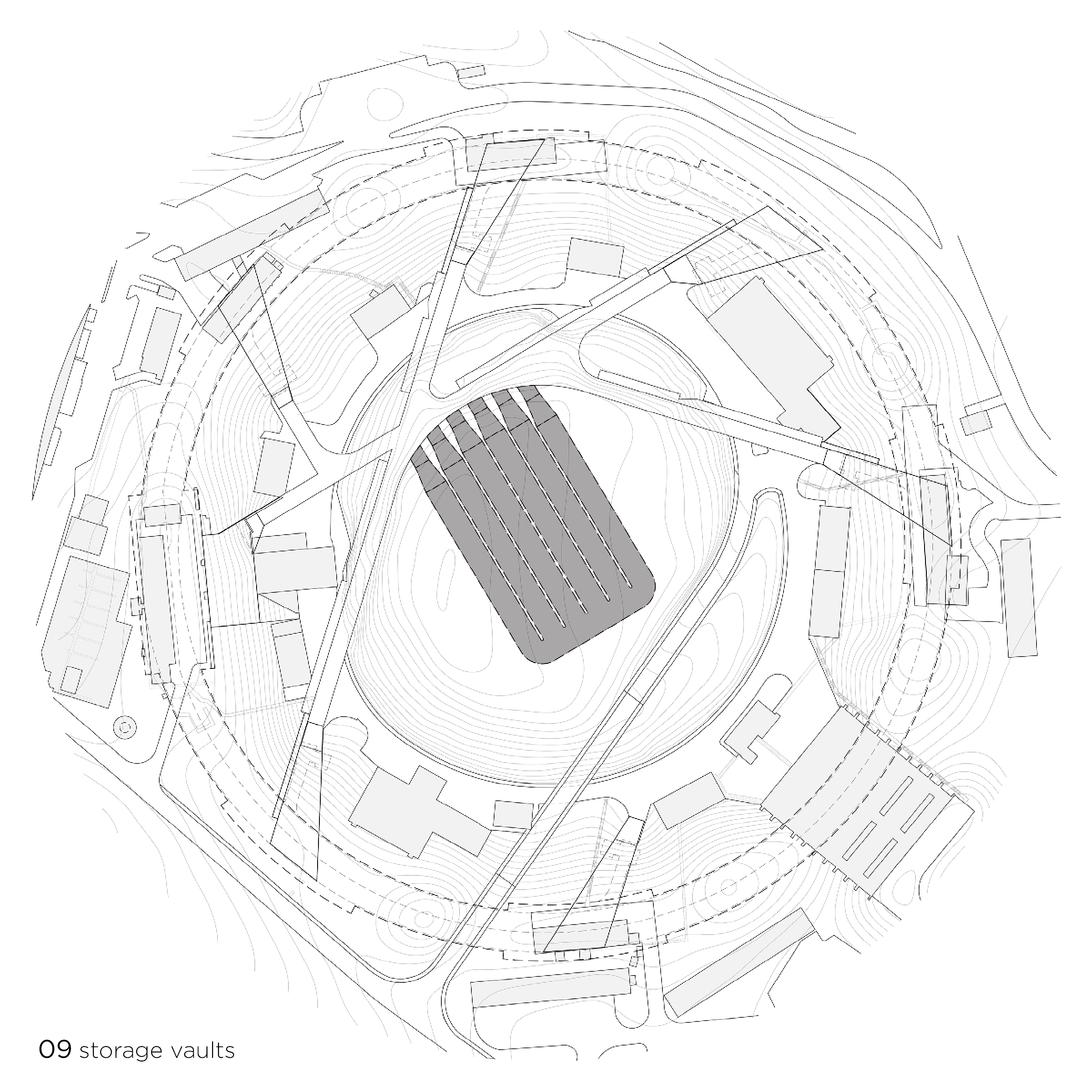
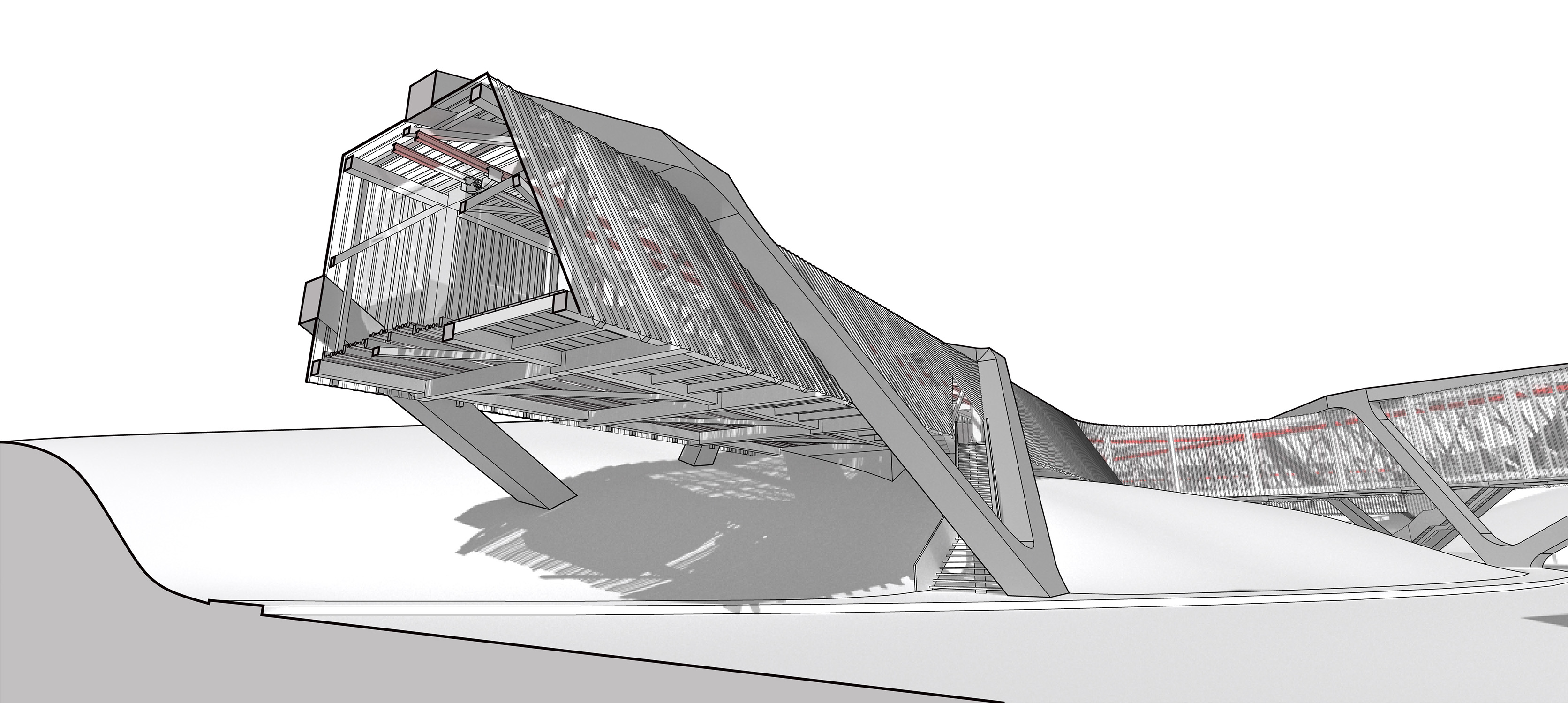


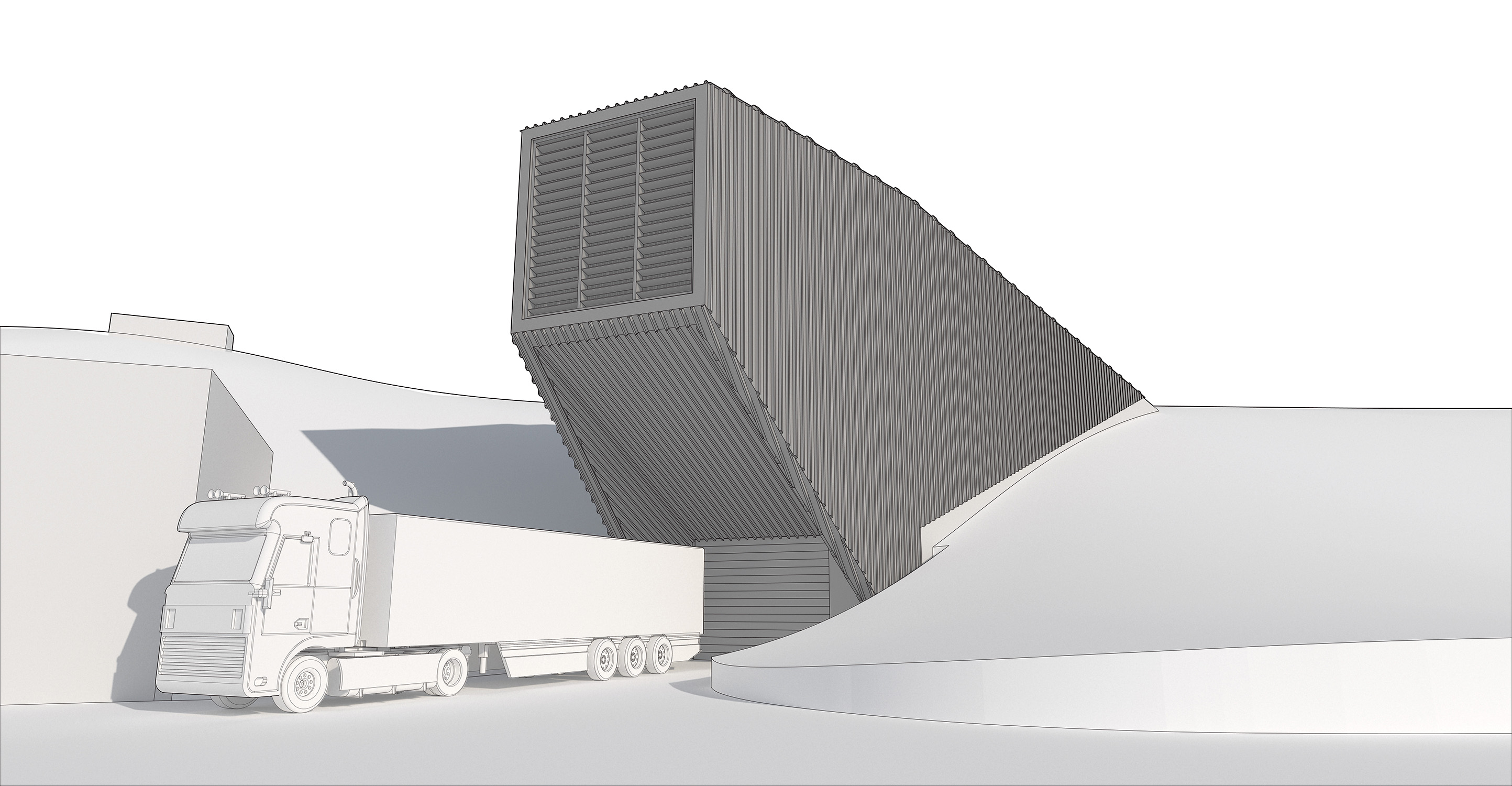
Vaults of Obsolescence
Vaults of Obsolescence proposes an infrastructure for the sorting, cataloguing, and long-term storage of obsolete objects and artifacts in the Meyrin campus of CERN. Nested within the technological sector of CERN, the project re-purposes the decommissioned Intersecting Storage Rings (ISR) accelerator and its constituent elements and adjacent buildings to create an autonomous archival system that catalogs discarded items based on their type of obsolescence.
Beyond this archival process, the concept of obsolescence manifests itself physically, first as the existential condition of the site itself, and then in the aesthetic qualities of the architectural interventions, which repurpose and reconstitute the trivially and repetition of the warehouse typology present throughout the campus.
The ISR accelerator, completed in 1971, was the first Hadron Collider in the world. It was a major scientific achievement as its operation required the development of technologies for the collision of protons and the cooling of magnets still used today. Nevertheless, its own success rendered it obsolete, and was abandoned after only 13 years of use.
The accelerator tunnel has a centerline diameter of 300 meters and a cross section of 16m x 6.5m. Its construction required the trenching and removal of a vast part of the ground, leaving a steep, flat-top mound as a residual green space in the center of the site. After the accelerator was built, this mound became a grassy island, separated from the rest of the campus except for an access road that was built to lead into the site and was discarded as a viable building/leisure site. The sense of obsolescence is palpable in the site.
The project proposes to repurpose the ISR as a sorting and distribution facility and to transform the mound into a long-term repository for discarded objects by installing subterranean vaults.
The ISR space is divided into thirds. The inner two thirds of the ISR are used for the sorting process for the objects being discarded. The remaining third, the outermost ring, is allocated for temporary storage of objects, which is required by the transient nature of the sorting process. This zone is to be lined with boxes where items with similar qualities and type of obsolescence can be compiled before being moved to long-term storage. Likewise, the temporary storage provides quick access to objects that need to undergo repair, dismantling, or repurposing of parts, which takes place within the existing buildings connected to the ISR.
The ISR and the mound are linked with a network of conveyor bridges which hover above the road. This network emerges from extending the centerlines of the existing access points to the ISR onto the site and interconnecting them. This requires converting the access points into distribution devices: dubbed connectors, these skewed structures allow for the delivery of items in the ground level while providing the vertical transition required to move archived items up to the conveyors and into the vaults. Only one of the seven connectors is not directly linked to the network and it is used to temporarily store radioactive items that need to cool down for a certain amount of time before being manipulated.
The existing structure of the ISR and the surrounding buildings remain intact. The conveyor network, on the other hand, consists of a space frame system with a simple and repetitive module whose cross-section accommodates the track system for the moving cranes, the supportive mechanical and electrical components necessary for sustaining the system, and a hallway for visitors to experience the movement of the parts being transported from the ISR. The space frame is supported by an external super structure, whose angular projections not only allow the space frame to span over the road below, but also serve as pedestrian circulation, containing stairs that lead the public up to the conveyor hallways. Finally, the system is clad with corrugated panels that replicate the banal warehouse buildings of CERN: dark and opaque metal panels are used for the connectors, and translucent acrylic panels are used for the conveyors, allowing the moving items to be visible from the distance. The selection of materials as well as the public access aims to make the sorting process a spectacle to be observed.

